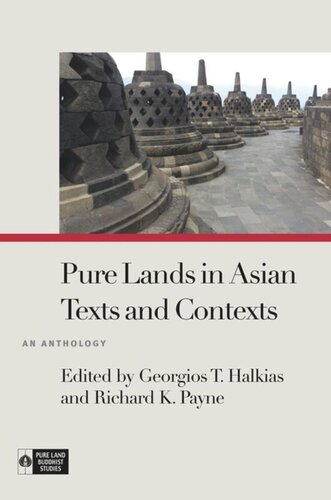

Most ebook files are in PDF format, so you can easily read them using various software such as Foxit Reader or directly on the Google Chrome browser.
Some ebook files are released by publishers in other formats such as .awz, .mobi, .epub, .fb2, etc. You may need to install specific software to read these formats on mobile/PC, such as Calibre.
Please read the tutorial at this link: https://ebookbell.com/faq
We offer FREE conversion to the popular formats you request; however, this may take some time. Therefore, right after payment, please email us, and we will try to provide the service as quickly as possible.
For some exceptional file formats or broken links (if any), please refrain from opening any disputes. Instead, email us first, and we will try to assist within a maximum of 6 hours.
EbookBell Team

4.4
62 reviewsThis diverse anthology of original Buddhist texts in translation provides a historical and conceptual framework that will transform contemporary scholarship on Pure Land Buddhism and instigate its recognition as an essential field of Buddhist studies. Traditional and contemporary primary sources carefully selected from Buddhist cultures across historical, geopolitical, and literary boundaries are organized by genre rather than chronologically, geographically, or by religious lineage—a novel juxtaposition that reveals their wider importance in fresh contexts. Together these fundamental texts from different Asian traditions, expertly translated by eminent and up-and-coming scholars, illustrate that the Buddhism of pure lands is not just an East Asian cult or a marginal type of Buddhism, but a pan-Asian and deeply entrenched religious phenomenon.
The volume is organized into six parts: Ritual Practices, Contemplative Visualizations, Doctrinal Expositions, Life Writing and Poetry, Ethical and Aesthetic Explications, and Worlds beyond Sukhāvatī. Each part is introduced and summarized, and each translated piece is prefaced by its translator to supply historical and sectarian context as well as insight into the significance of the work. Common and less-common issues of practice, doctrine, and intra-religious transfer are explored, and deeper understandings of the meaning of “pure lands” are gained through the study of the celestial, cosmological, internal, and earthly pure lands associated with various buddhas, bodhisattvas, and devotional figures. The introduction by the volume editors ties the diverse themes of the book together and provides a historical background to Pure Land Buddhist studies. Scholars of Buddhism and Asian religion, including graduate and post-graduate students, as well as Buddhist practitioners, will appreciate the range of translated materials and accompanied discussions made accessible in one essential collection, the first of its kind to center on the formerly-neglected topic of Buddhist pure lands.